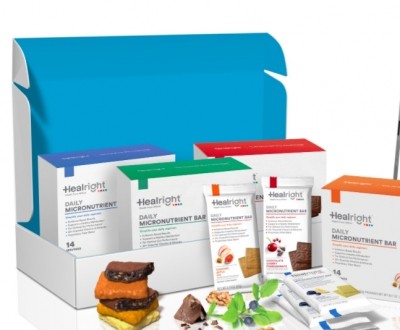Dr. Bruce Ames: ‘The role of vitamins in healthy aging has been less appreciated’

His arguments are published in Proceedings of the National Academy of Sciences, based on Dr. Ames’s review of peer-reviewed nutrition papers as well as his own decades of research in his laboratory at the Children’s Hospital Oakland Research Institute.
“Prolonging healthy aging has not been previously understood as being related to vitamin or mineral levels,” Dr. Ames said in a statement emailed to NutraIngredients-USA.
“Vitamins and essential minerals are usually thought of as compounds crucial for survival or protection against severe ill health, as shown by their dramatic short-term effect upon removal from the diet; most are necessary for critical metabolic functions. The role of vitamins in healthy aging has been less appreciated.”
He added: “However, nutrient deficiencies are highly prevalent in the United States and elsewhere, and such deficiencies are responsible for many of the typical diseases of aging, as discussed in the paper, such as cancer, heart disease, and brain decay.”
Thus, “in addition to keeping physically fit, the low hanging fruit in prolonging a healthy aging lies in optimizing vitamin and mineral intake.”
Triage Theory: Survival proteins vs. longevity proteins
Dr. Ames’ latest paper builds on his Triage Theory, which posits that nature (including the human body) favors survival today over protection from future damage.
This means that when nutrient intake is deficient, the body’s built-in rationing mechanism favors the proteins needed for immediate survival while sacrificing those needed to protect against future damage.
In his latest paper, he suggested that proteins and enzymes should be classified into ‘survival proteins’ and ‘longevity proteins.’
Longevity vitamins
Additionally, he proposed that vitamins and minerals needed to support the function of longevity proteins should be called ‘longevity vitamins.’ Considering that many vitamins were discovered because severe dietary deficiencies were linked to serious adverse health effects, this makes sense.
This list includes 30 known vitamins and minerals such as vitamins A, B1, B2, biotin, C, choline, D, E, K, as well as minerals calcium, chloride, cobalt, phosphorus, zinc, and more.
Longevity vitamins can then be divided into two other categories: Vitamins that support both survival and longevity proteins, thus subject to the body’s triage rationing, and those that support health without emphasis on early survival, “but with their shortage leading continuously to accelerated aging, which may or may not be rationed.”
Vitamins K, D, and the mineral selenium, for example, fall into the first group.
For the second group, Dr. Ames argued that it consists of dietary compounds not yet recognized as vitamins or mineral.
“It is likely that dietary compounds that are not essential for survival and are used exclusively for protecting and improving healthy longevity would not yet have been recognized as a vitamin or mineral, because the effects of their deficiency would have been evident only in the form of insidious late damage,” he wrote.
He supported the consideration of these compounds as ‘conditional vitamins’ and ‘putative longevity vitamins,’ including the fungal antioxidant ergothioneine, the bacterial metabolites pyrroloquinoline quinone (or PQQ) and queuine, plant antioxidants carotenoids lutein, zeaxanthin, lycopene, alpha- and beta-carotene, and the marine carotenoid astaxanthin.
So what comes next? Personalized nutrition is one potential
Dr. Ames argued that this review shed more light on how humans can optimize nutrition for longevity and disease prevention, potentially lowering medical costs.
“The prevention of the degenerative diseases of aging is a different science than curing disease: it involves expertise in metabolism, nutrition, biochemistry, and genetic regulatory elements and polymorphisms…Eventually, the age of preventive medicine will take into consideration the major effects of V/M components, in addition to genetic factors,” he said.
“The optimization of the nutritional status and of the level of various biomarkers could be determined by each individual, perhaps through an analyzer machine using a finger prick of blood.”
Source: Proceedings of the National Academy of Sciences
Published online ahead of print, www.pnas.org/cgi/doi/10.1073/pnas.1809045115
“Prolonging healthy aging: Longevity vitamins and proteins”
Author: Bruce N. Ames, PhD
















